
- Home
- News
- Analysis
- States
- Perspective
- Videos
- Education
- Entertainment
- Elections
- World Cup 2023
- Features
- Health
- Business
- Series
- Economy Series
- Earth Day
- Kashmir’s Frozen Turbulence
- India@75
- The legend of Ramjanmabhoomi
- Liberalisation@30
- How to tame a dragon
- Celebrating biodiversity
- Farm Matters
- 50 days of solitude
- Bringing Migrants Home
- Budget 2020
- Jharkhand Votes
- The Federal Investigates
- The Federal Impact
- Vanishing Sand
- Gandhi @ 150
- Andhra Today
- Field report
- Operation Gulmarg
- Pandemic @1 Mn in India
- The Federal Year-End
- The Zero Year
- Premium
- Science
- Brand studio
- Home
- NewsNews
- Analysis
- StatesStates
- PerspectivePerspective
- VideosVideos
- Entertainment
- ElectionsElections
- Sports
- Loading...
Sports - Features
- BusinessBusiness
- Premium
- Loading...
Premium
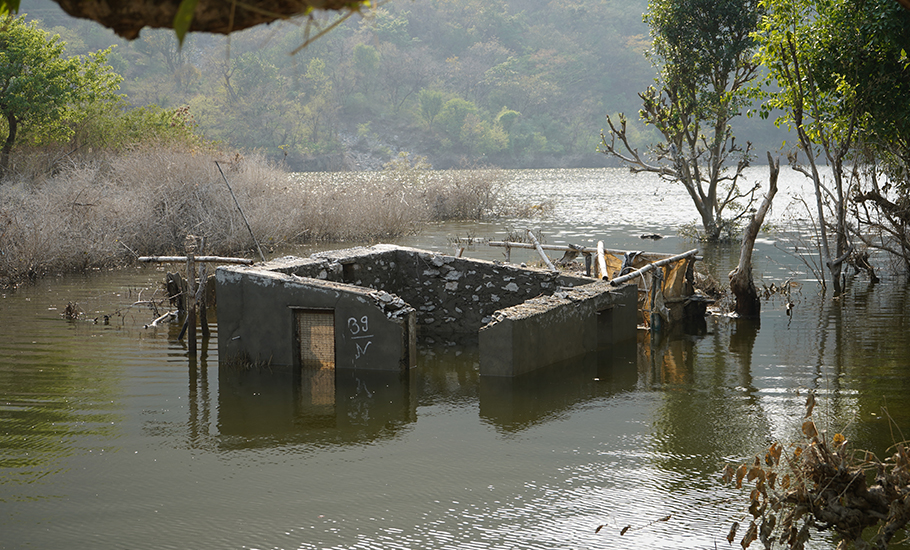
To quench Delhi’s thirst, govt drowning Uttarakhand, Himachal villages

On April 11, 95-year-old Gumani Devi, her children, grandchildren and great grandchildren all stood in a line and watched from a distance their home being swallowed by the waters of Vyasi reservoir in Uttarakhand’s Lohari village. Just hours earlier, the family members were forced to leave their home following a government order. Seventy six other families in the village did the same...
On April 11, 95-year-old Gumani Devi, her children, grandchildren and great grandchildren all stood in a line and watched from a distance their home being swallowed by the waters of Vyasi reservoir in Uttarakhand’s Lohari village. Just hours earlier, the family members were forced to leave their home following a government order. Seventy six other families in the village did the same – packed whatever belongings they could and left behind their harvested crops of wheat, maize, ginger, garlic, turmeric, and a lifetime of memories.
Lohari is one of the six villages that were chosen to be wiped out to make way for the Vyasi Hydropower Project.
“I have spent my entire life in the village. I have seen my children grow up here. I have performed my husband’s last rites here. How could someone take away my home without even asking me and submerge it for a project to stand on its ruins? I may not live beyond a year or two, but what will happen to my children?” asks a weather-beaten Gumani Devi.

With nowhere to go, Lohari residents have now moved to a village school about 100 metres away.
“There is a junior high school 100 metres away from the village with four rooms. There are nearly 100 people living in those four rooms. We have nowhere to go as of now. Some people sleep on the terrace, some outside the rooms,” said Sukhbeer Tomar, head of Lohari village.
“The government did not care to make any arrangements for us. Even after a month, no one from the government has provided us with any land or room to live. We have no idea where to go and how to go. We had to give even our animals to our relatives to keep them alive,” adds Sukhbeer.
Capital concerns
Delhi, the national capital, where the high and mighty of the country live, has been facing a severe water crisis for the past few decades. To quench Delhi’s thirst, the Indian government decided to undertake various multi-purpose projects in Himachal Pradesh and Uttarakhand — two hilly states of India that are both ecologically sensitive and prone to natural disasters given their precarious topography. In 2021, Prime Minister Narendra Modi laid the foundation stone of the Renukaji Dam on the Giri river in Sirmaur district of Himachal.
In Uttarakhand, the Modi government revived the Lakhwar-Vyasi project on the Yamuna river. This 120-megawatt station is part of the 420 MW Lakhwar-Vyasi project, the biggest hydroelectric dam complex on Yamuna. Conceptualised nearly half a century ago, the project was suspended in 1992. It was controversially revived in 2014 based on old clearances lacking environmental impact assessment, local consultation, or disaster risk study.
That’s not all. The Indian government is even considering building the Kishau dam on the Tons river. The project, which proposed to border Uttarakhand and Himachal Pradesh, has faced rejection for 50 long years.
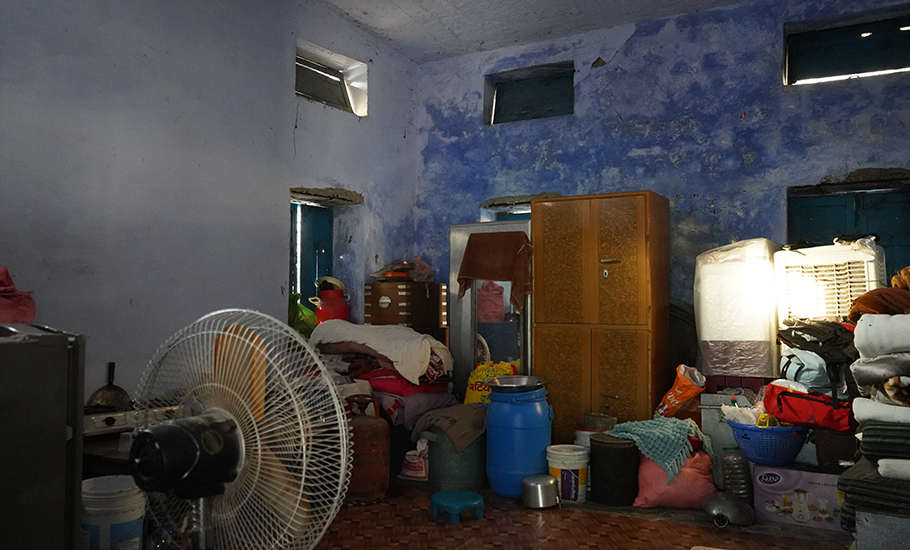
All these projects aimed at providing drinking water to Delhi and irrigation water to other north Indian states of Punjab, Haryana, Uttar Pradesh and Rajasthan, are turning into a death knell for the locals of Himachal Pradesh and Uttarakhand.
For Lohari, all it took to wipe away lives and livelihood was a 48-hour notice. But Dehradun district magistrate Rajesh Kumar says the villagers were told well ahead of time, about a year ago, that their village would be submerged and several rounds of talks were held to convince them to leave in time. “On April 9, they were served a two-day notice to vacate the village and find a suitable place to live,” adds Kumar.
The now displaced villagers say while the meetings did take place, they were held only to convey the government’s diktat, and not to accommodate the people’s concerns or to pay heed to their demands.
“Several meetings did take place, but no consensus was reached. We were not willing to give our land to be submerged. We protested and organised a peaceful dharna for four months to save our land. The sit-in protest went on from June 5 to October 2, 2021,” says 35-year-old Rajpal Singh Tomar, a farmer from Lohari.
On Mahatma Gandhi’s birth anniversary came the police crackdown on the silent protesters of Lohari.
“On October 2, the police put many of us in jail. Our major demands were rehabilitation and land for our rehabilitation. While our demands were never accepted, we were arrested. We then decided to not give our land to the government. But they took it forcibly anyway and submerged it.”
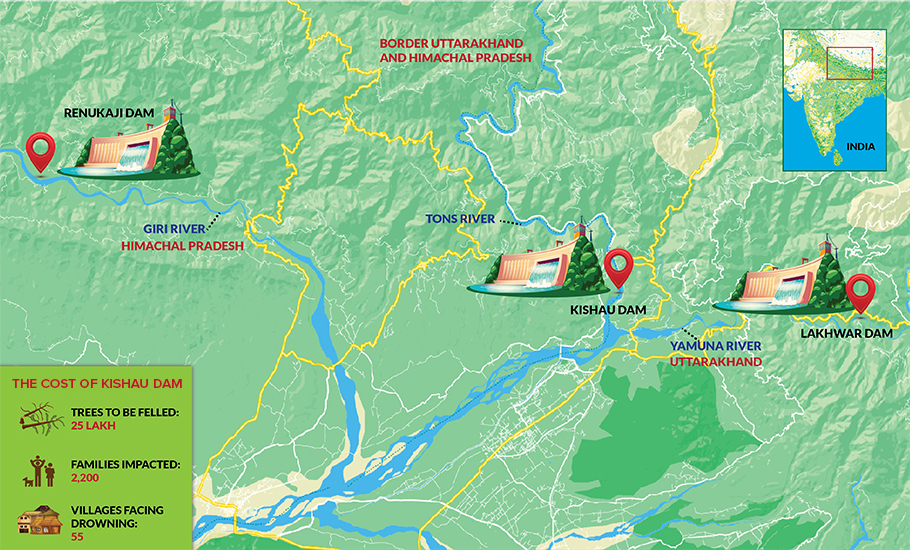
A month after losing their homes and fields, Lohari residents find their wounds festering.
“It has been a month since our village was submerged but we are not able to forget what happened. The government is more accommodative towards Rohingyas and other refugees coming to the country but we were rendered homeless without a care in our own country,” says 53-years-old Sukhpal Singh Tomar.
A teacher by profession, Sukhpal reminds everyone around him of the importance of Lohari village, where the Pandava brothers from the Mahabharata are believed to have lived once. “Even today, we follow the traditions of the Pandavas,” he says.
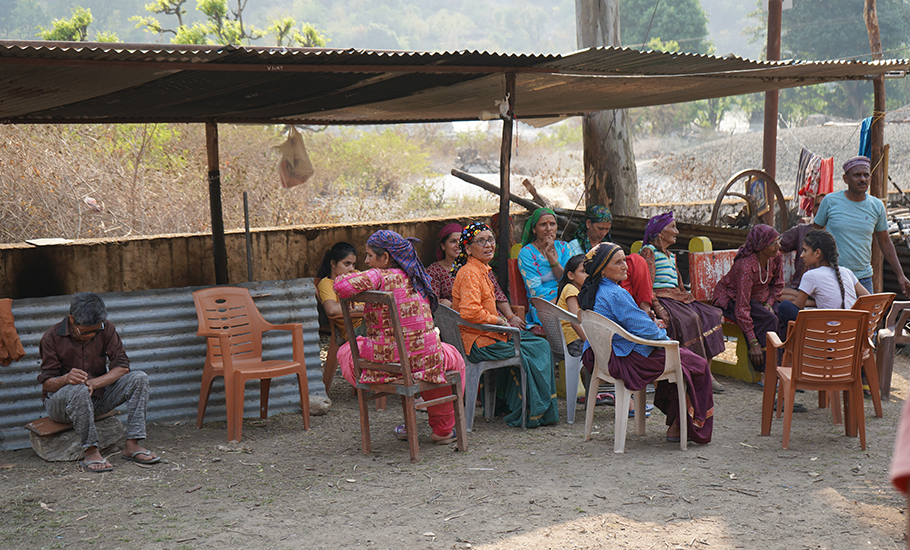
Coming back to the present, Sukhpal adds that even landlords give their tenants at least a month’s notice to vacate the premises. “But we were just given 48 hours to vacate our own land. In just 48 hours, we shifted everything, including our religious and cultural idols. Our harvested crops have been destroyed completely,” he adds.
Villagers say the government has short-changed them in the compensation offered.
“They are saying they have provided Rs 18 crore as relief to the villagers. Where is that money? I just received Rs 3.75 lakh. Where will I go with this money? Can I buy land or a house with this money when inflation is so high? How will I feed my family?” Sukhpal asks on behalf of the rest of the villagers.
The residents say the government action came as a shock because the authorities rubbished all their demands and left them at the mercy of their own fate.
“We have been living here for decades. We knew that we would have to leave this place one day but we never thought they would force us out of our own land like we are encroachers. We are farmers. We always wanted land in exchange of land. The government even promised that they will provide us with land. But they gave us nothing,” says Rajpal.
The action came within a month of the Pushkar Singh Dhami-led BJP government storming back to power in the state.
“As soon as the BJP came back to power in Uttarakhand, they attacked us with bulldozers and police. This is possible only in a dictatorship. Police came here in thousands as if we are from Pakistan and we are planning to attack the nation. We always helped the government. If it is in the nation’s interest, make as many hydropower plants as you can,” he adds.
Rajpal claims the villagers did not even come in between the government’s work. “We were just demanding land for land and proper rehabilitation. We never demanded crores of rupees. It will all be okay if the government provides us with land. But no one is listening,” Rajpal says.
Like the rest of them, for 70-year-old Biedma Devi, too, the government’s action has meant loss of her entire life’s savings and memories.
“The government has ruined our lives. There is nothing left for the next generations. I came to the village after my marriage. I was five then. This is our ancestral land. We made a house here from our life’s savings. We worked hard. I myself worked in the fields. Suddenly, everything is gone. We have no place to live now. My grandchildren are at our relative’s place. We had to give our animals for free. The elderly are not keeping well. Nothing is left for us now,” says an inconsolable Biedma Devi.
For the villagers camping at the school, there are more immediate issues at hand to be dealt with. “Our Prime Minister is promoting ‘Clean India’ but we are now forced to defecate in the open. A lot of fish die here. The foul smell made two-three people sick and we had to admit them to the hospital,” says Sukhbir.
Biedma Devi too is miffed. In a country that started an open-defecation free campaign harping on women’s dignity, the fate of Lohari’s women has been discounted. “I urinate in the open now. All women are forced to do the same,” adds Biedma.
With no immediate solution in sight, some of the villagers sent their children to relatives outside the village to save them from falling sick.
“But for how long and how far?” asks Biedma Devi.
Not too far away in Himachal Pradesh, nearly 1,142 families suffered the same fate as the villagers of Lohari due another such project – Renukaji dam. People were promised land for land but no one got anything.
“We have been assured that we will be given a job, land and fair compensation for our land. But we have been cheated. After giving us some money, the government forgot about us completely. They took our land but never gave the compensatory land,” Yogendra Kapila, a local, said.
More disaster, displacement waiting to happen
Straddling the border districts of Uttarakhand and Himachal Pradesh, there is another multipurpose project planned on the Tons river – a major tributary of the Yamuna, originating in the Jamnotri mountains and passing through Shimla and Sirmaur districts (in Himachal Pradesh) and Jaunsar-Bawar region in Dehradun (Uttarakhand).
The 236-metre Kishau dam is supposed to be the second-highest in India after the Tehri dam. Under the project, 2,950 hectares of land will be submerged of which 1,498 hectares are in Himachal and 1,452 hectares in Uttarakhand. A total of 5,498 people belonging to 701 families in 17 villages will have to leave their villages because of the project.
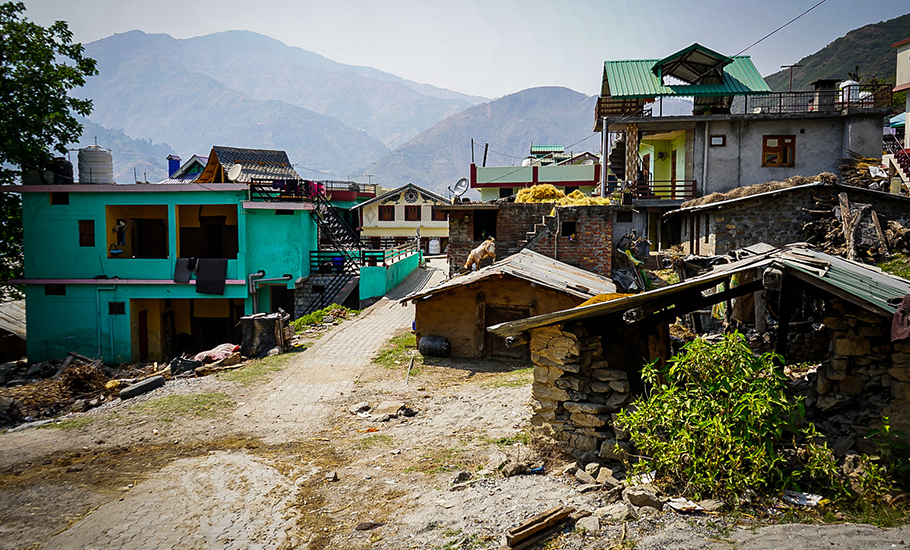
Nine villages of Uttarakhand and eight villages (six from Sirmour and two from Shimla district) of Himachal are likely to be impacted by the project.
Mohar Singh, a farmer from Majhgaon village in Dehradun, says, “We have all of our economic, religious and personal connections here. Submerging this area will be like submerging a part of us. We will not let that happen. We will die, but will not let the area drown.”
Of the 2,950 hectares marked for submergence, 512 hectares is cultivated private land and 2,438 hectares forest land. Agriculture with livestock rearing is the main livelihood activity in the region. Farming is carried out on relatively flat lands with irrigation facilities available all through the year allowing multi-cropping and highly productive farming. People also practice commercial farming and grow crops such as ginger, turmeric, cabbage, tomatoes and groundnut among others on a large scale.
Diwan Singh, head of the Majhgaon village, says, “The project will submerge the entire agricultural land of the area. This area along the Tons river is known as diamond for farmers. Nowhere in Himachal or Uttarakhand, does such a fertile plain area exist. Even if the government rehabilitates us somewhere, which we are not sure of, we will not get such land. The dam will hit our livelihood directly.”
Apart from agriculture, livestock rearing is another major occupation of the communities. Guman Singh from Siyasu village in Himachal, another village facing drowning, says, “I have 14 goats and four cows. If our village submerges, I don’t know where to take my livestock.”
“People displaced by the Renukaji Dam project have not been rehabilitated even a year later. Those who were, got barren land. We have very fertile land and easily get water from the Tons river here. That makes managing agriculture and livestock easy. We fear that this dam will take away everything – our employment, land, houses and animals,” adds Guman.
Apart from these concerns, there is another big worry. The projects that the government is going ahead with fall in seismic zones and pose a long-term risk to lives.
The tragedy only begins with uprooting people. The environmental cost of the projects is difficult to compute.
Nilesh Negi, an environmental activist based out of Himachal, says, “This is yet another forceful uprooting of people, tribes, animals and biodiversity from their natural place. The project [Kishau dam] is in a seismic zone due to which it has already been rejected. The cost analysis of the project is also very low because of which the Technical Advisory Committee had rejected the project.”
“The decision to go ahead with the project was born out of the government’s stubbornness. If this project is successfully built, it will be a huge loss to the biodiversity of the area. Floods and landslides will further increase in adjoining areas. Lakhs of springs will die. The government should reconsider their decision of making such a big dam,” Negi adds.
Residents, meanwhile, point out how the disaster is being underplayed by the government by not revealing the full scale of the displacement.
“The government says that 17 villages will be submerged and around 5,000 people will have to be rehabilitated. All along the 44.5 kilometre of the submergence area, villages are located on both sides of the river at some interval. For instance, the name of our village is Majhgaon. And Majhgoan along with two other villages is known as Kuwanu. So, Kuwanu is not a single village but a set of three villages. But in the government reports, Kuwanu is shown as a single village,” Diwan explains.
“Moreover, they didn’t count non-revenue villages. In fact, the Kishau Dam work will be done in Sambar Khera village, which is a non-revenue village. They named the project Kishau because Kishau is a revenue village. Apparently, Sambar Khera’s name is not mentioned anywhere in the list of the submerged villages. Actually, there are more than 30 villages in the area and more than 20,000 people whose lands, houses and belongings will be submerged and they will be rendered unemployed and homeless. The forest-based livelihood and food system will be completely destroyed,” Diwan adds.
This, despite the the government’s own Union Ministry of Tribal Affairs in 2019 saying that “wrongfully dispossessing members of scheduled castes or scheduled tribes from their land or premises or interfering with the enjoyment of their rights, including forest rights, over any land or premises or water or irrigation facilities or destroying the crops or taking away the produce therefrom amount to the offence of atrocities and are subject to punishment under said Act [The Scheduled Castes and the Scheduled Tribes (Prevention of Atrocities) Act, 1989]”.
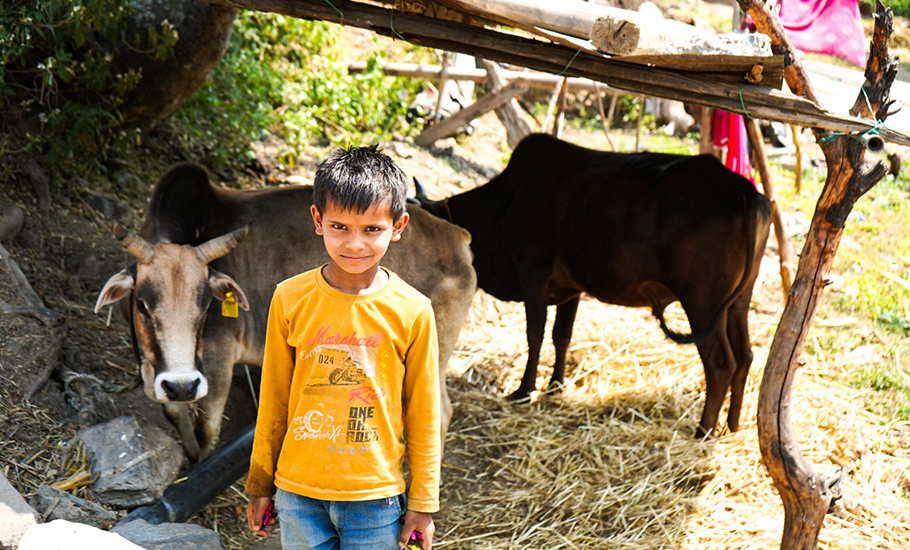
“Who cares for the Forest Rights Act? We have been seeing scheduled tribes and castes being forcibly evicted from their land since Independence. They will get the least in this case as well,” says Deena Varma, a Dalit activist based in Dehradun.
“All their lives they have lived in misery. Now, they are forever damned.”

